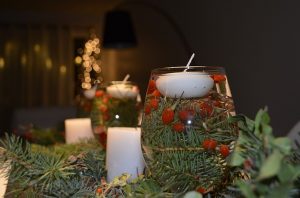By Naden Hewko – Macklin, Sask.
We knew Christmas was coming when the teacher at our Paynton, Sask., school started to prepare us for the annual concert.
The brick school had four classrooms, two on the main floor and two upstairs, with Grades one to twelve. There was no gymnasium or auditorium as we find in modern schools, but the Christmas concert was very important to the community as all the grades – about 240 children – participated in the program.
Every child was included even if just in the group skit of The Old Woman Who Lived in a Shoe or in the chorus that sang carols.
Just across the large schoolyard stood the community hall that was referred to as the Legion Hall. It was the centre of all social activities including wedding dances, picture shows, Remembrance Day service, and of course, the Christmas concert. It was the perfect venue as it had a large stage with a curtain that went up and down on a huge roller.
The hall would be filled to capacity on the evening that the concert was presented. All the parents, relatives, neighbours, and residents of the village would come.
After the last curtain call, Santa would appear with a sackful of treats for all the children present. Each child received a brown bag with a mandarin orange (though we knew them as Japanese oranges back then) available only during the Christmas season, a handful of unshelled nuts and hard candy.
This was followed by a community dance but we usually didn’t stay.
Everything cooked on wood burning range
When Dec. 25th rolled around, we kept it as we would a Sunday and did only necessary chores. Christmas in our family was celebrated in January as our parents had immigrated to Canada from Ukraine and followed the old Julian calendar. That made Christmas Eve fall on Jan. 6th. That was the most special evening in the celebration of the birth of Jesus.
A meal of traditional Ukrainian foods was prepared and served at the Holy Eve Supper (Svyata Vechera). How delicious were all the odours in the kitchen as mother boiled and baked. Our job was to keep the wood box filled as everything was cooked on the wood burning kitchen range.
Dad set up an evergreen in a pail of sand and supervised our decorating it.
When the first star appeared in the sky we knew the Holy Eve Supper would begin. Mother had a white cloth on the table and dad had a small sheaf of wheat set under the holy picture of Jesus. We all gathered to say a prayer before beginning the meal.
Then a number of foods, 12 meatless dishes in all were served. Kutia (boiled wheat flavoured with crushed poppy seeds and sweetened with honey) was the first dish.
The menu varied according to each household, but included: borsch, fish (baked or fried), 2 kinds of cabbage rolls, 2 kinds of perogies, braided bread (kalach), mushroom and onion sauce, pumpyshkies (deep fried donuts without the hole), baked rolls (perishkies) filled with dried fruit, and a compote of cooked dried fruit such as apples, prunes, and figs.
The meal ended with the singing of a verse or two of the traditional Ukrainian carol, God Eternal (Boh Predvichny).
We loved the food that mother had worked all day to prepare, and we still had room for the candy and nuts that followed. In those days that was a real treat.
We lived far from any church, so we listened to the Ukrainian Christmas Mass broadcast over the radio from St. George’s Cathedral in Saskatoon. As we started to doze, mother would lead us off to bed, then return to listen to her beloved liturgy.
The next day, Jan. 7th, was Christmas day and we would have company or be invited out to a friend’s home. The day was spent in sharing good food, visiting, and sometimes singing. Presents and Santa Claus were not a part of the celebrations.



